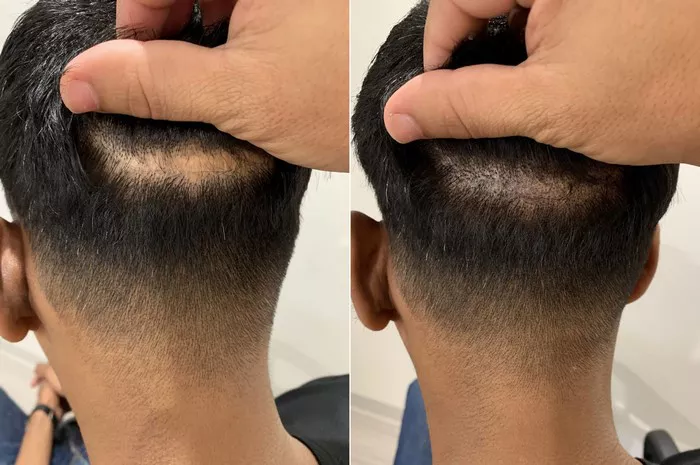Hair loss affects millions worldwide, prompting many to seek effective solutions. Among the most popular and reliable options is a hair transplant, a procedure that can restore a natural hairline and boost confidence. If you’re considering this treatment, one crucial question arises: how long does a hair transplant take to heal? Understanding the healing timeline can help you set realistic expectations and plan your post-procedure care effectively.
Understanding Hair Transplant Surgery
Before diving into the healing process, it’s important to grasp what happens during hair transplant surgery. The procedure involves harvesting hair follicles from a donor site—usually the back or sides of the scalp—and implanting them into balding or thinning areas. There are two primary techniques: Follicular Unit Extraction (FUE) and Follicular Unit Transplantation (FUT). Both require precise surgical skill and involve creating tiny incisions to implant the grafts.
The Healing Process: What to Expect
The healing journey after a hair transplant varies among individuals but generally follows a predictable timeline. The process can be divided into several stages, each with distinct characteristics and care requirements.
1. The First Few Days (0-7 Days)
Immediately following surgery, the scalp will be tender, red, and swollen. Tiny scabs will form around the transplanted follicles and donor sites. During this critical period, it’s essential to avoid touching or scratching the treated areas to prevent infection and dislodging grafts. Patients are usually advised to sleep with their heads elevated and use gentle washing techniques recommended by their surgeon.
2. The Initial Healing Phase (1-2 Weeks)
Within the first two weeks, most of the swelling and redness will subside. The scabs will naturally fall off, revealing new hair grafts that may initially look fragile. Some patients experience mild itching, a normal part of the healing process. It’s crucial to follow the hair transplant recovery instructions provided by the clinic, including avoiding strenuous activity, direct sun exposure, and harsh hair products.
3. Shedding Phase (2-6 Weeks)
One of the more surprising phases is the shedding of transplanted hair, typically occurring between the second and sixth week. This is called “shock loss” and is a natural part of the hair growth cycle. Though it may seem discouraging, the hair follicles remain healthy beneath the skin and will soon begin to grow new hair.
4. Early Hair Growth (3-4 Months)
New hair starts to grow gradually after the shedding phase, usually around three to four months post-surgery. The hairs may initially be fine and lighter in color, but over time, they thicken and darken. Patience is key during this stage, as growth can be slow and patchy.
5. Significant Hair Growth (6-9 Months)
By the six to nine month mark, most patients notice considerable improvement in hair density and coverage. The transplanted hairs blend more naturally with existing hair, and the overall appearance becomes more uniform.
6. Final Results (12-18 Months)
The full results of a hair transplant usually take up to 12 to 18 months to manifest. By this time, the hair is fully grown, thick, and styled like natural hair. Some clinics recommend follow-up appointments to assess progress and discuss any further treatments if necessary.
Factors Influencing Healing Time
Several factors can impact how quickly a patient heals after a hair transplant:
Technique Used
FUE generally has a faster recovery period than FUT because it involves smaller puncture wounds instead of a linear incision.
Patient’s Age and Health
Younger, healthier individuals often experience faster healing due to better skin elasticity and immune response.
Post-Operative Care
Strict adherence to recovery instructions, including medication, scalp hygiene, and lifestyle adjustments, significantly influences healing speed.
Extent of Transplant
Larger sessions involving thousands of grafts may take longer to heal compared to smaller procedures.
Common Post-Operative Symptoms and How to Manage Them
After surgery, some symptoms are typical but manageable with proper care:
- Swelling: Usually peaks within the first 2-3 days and resolves within a week.
- Itching: Indicates healing but should not be scratched to avoid infection.
- Redness and Tenderness: Expected for up to 2 weeks but can be minimized with gentle care.
- Scabbing: Protects the transplanted follicles and will naturally fall off.
Tips for a Faster and Safer Recovery
Maximizing the success of your hair transplant depends heavily on post-operative care:
- Follow all surgeon instructions meticulously.
- Avoid strenuous physical activity for at least two weeks.
- Keep the scalp clean using recommended shampoos.
- Stay hydrated and maintain a healthy diet to support healing.
- Avoid direct sunlight and wear hats when outside.
- Refrain from smoking and alcohol consumption during recovery.
When to Contact Your Surgeon
While most symptoms are normal, immediate consultation is necessary if you experience:
- Excessive bleeding or pus discharge
- Severe pain unrelieved by medication
- Signs of infection such as fever or spreading redness
- Graft loss or unusual scalp changes
Cost Considerations and Final Thoughts
Understanding the hair transplant cost is also important when planning your procedure, as it may affect your choice of clinic and technique. Prices vary based on location, surgeon experience, and number of grafts required.
Conclusion
The healing timeline for a hair transplant typically spans from a few days to about 18 months for full results. Patience, proper care, and realistic expectations are vital for a successful outcome. By knowing what to expect during each phase, you can navigate your hair transplant recovery with confidence and ease.
Related Topics:
- Chrissy Teigen Reveals Hairline-Lowering Procedure After Hospital Photo Sparks Concern
- Hair Fall in Your Teens? These 7 Expert-Approved Fixes Can Help Reverse the Damage
- 5 Scalp Health Treatments That Can Halt Hair Fall Effectively


